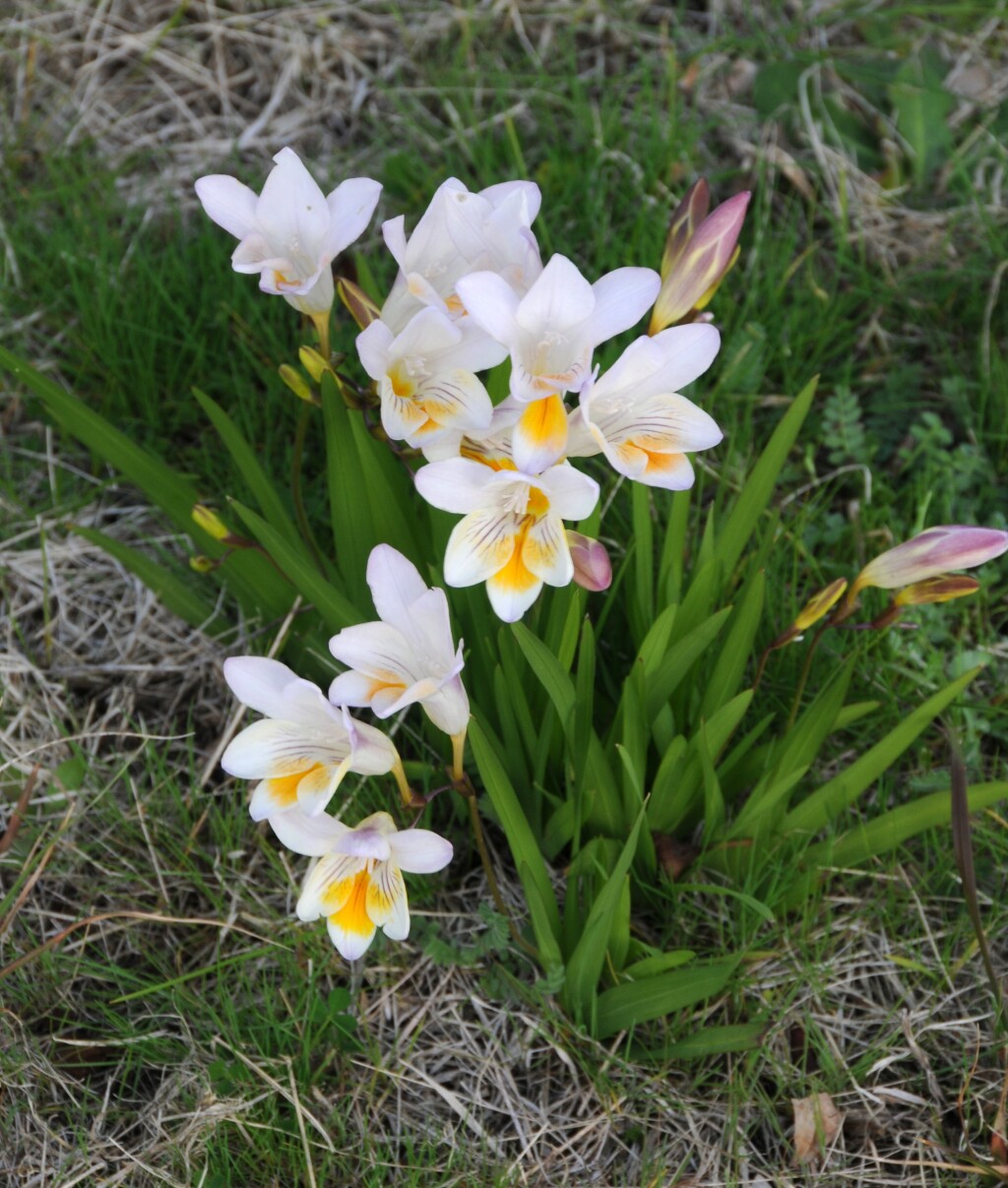Freesia leichtlinii
Klatt FreesiaCorm c. 1.5 cm diam. Leaves 4–8, basal, erect, linear-ensiform, 8–27 cm long, 5–10 mm wide. Inflorescence with non-flowering part wiry, slightly papillose basally; 3–7-flowered. Primary bracts 5–8 mm long, herbaceous, with margin hyaline. Flowers white to cream-coloured, with yellow markings, shaded purple on outer surface of tube, sweetly scented. Perianth tube 2–3.5 cm long, narrow in basal 6–8 mm, expanded distally; lobes 10–15 mm long, 6–9 mm wide; adaxial lobe slightly hood-shaped, other lobes narrower and spreading. Staminal filaments c. 20 mm long; anthers c. 6 mm long. Style exceeding anthers. Capsule 1–1.5 cm long, rugose, green. Bulbils produced in lower leaf axils. Flowers Sep.–Oct.
LoM, MuM, Wim, GleP, VVP, VRiv, GipP, OtP, Gold, CVU, GGr, NIS, HSF, VAlp. Also naturalised WA, SA, Qld, NSW, ACT. Native to South Africa. A common garden plant which is naturalized along roadsides and wasteland in towns, and locally in native vegetation.
The common naturalised freesias in Victoria are mostly of hybrid origin derived from Freesia leichtlinii subsp. alba (G.L. Mey.) J.C. Manning & Goldblatt and F. leichtlinii Klatt. subsp. leichtlinii. A few specimens closely approximate one or the other parent subspecies, but these are in the minority. True subsp. alba has white to cream flowers, often flushed purple on the outside, with the narrow tubular part about 2–4 cm long and the tepals virtually equal and equally spreading. Subspecies leichtlinii has cream to yellow flowers with broad yellow markings on the lower three tepals, the narrow tubular part usually less than 1 cm long and the three upper tepals larger than the lower, with the central one slightly hooded. The common garden freesias of the last century were produced from these 2 subspecies. Modern horticultural hybrids commonly involve the pink-flowered variant of F. corymbosa (Burman f.) N.E. Br.
 Spinning
Spinning

